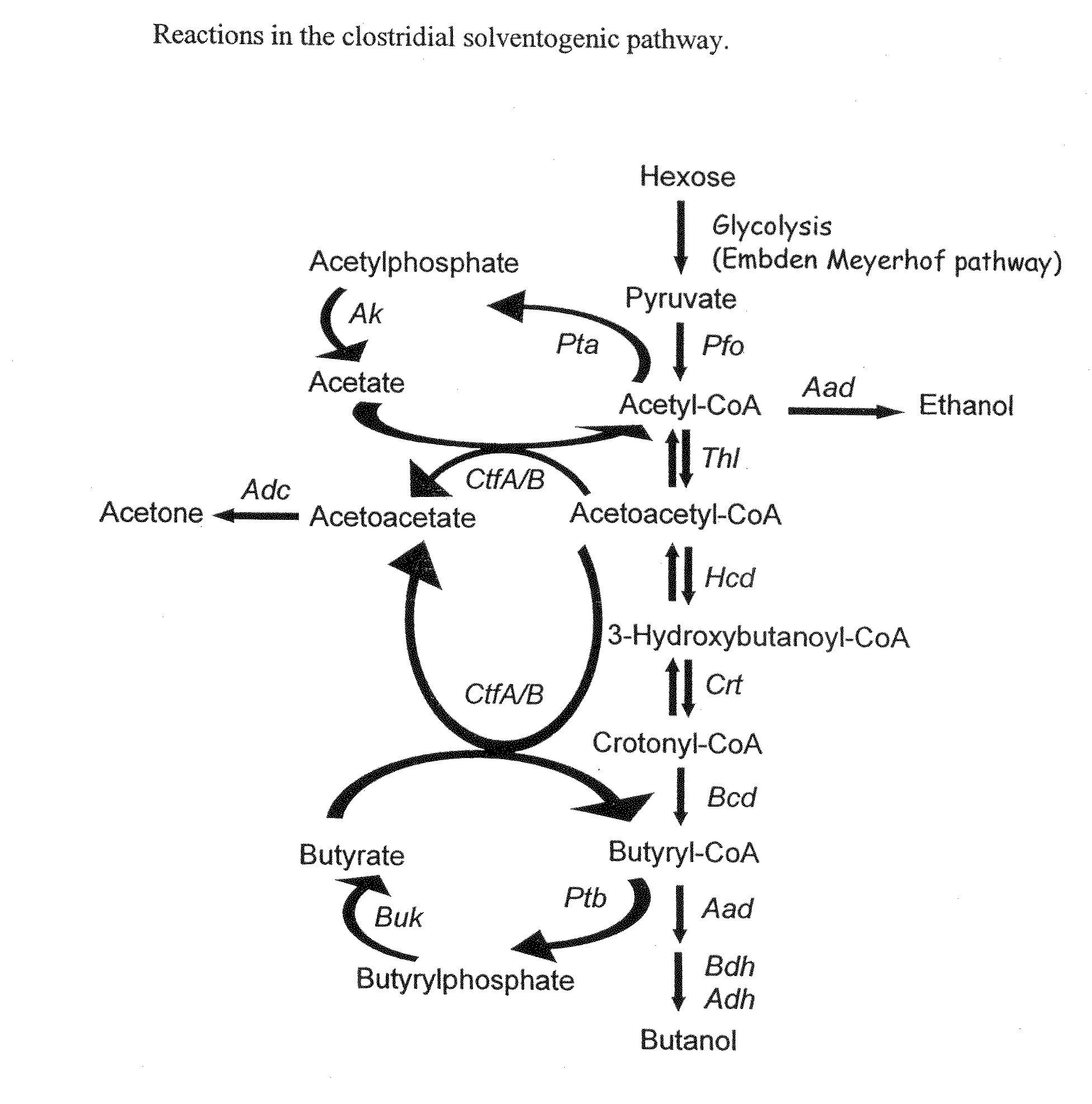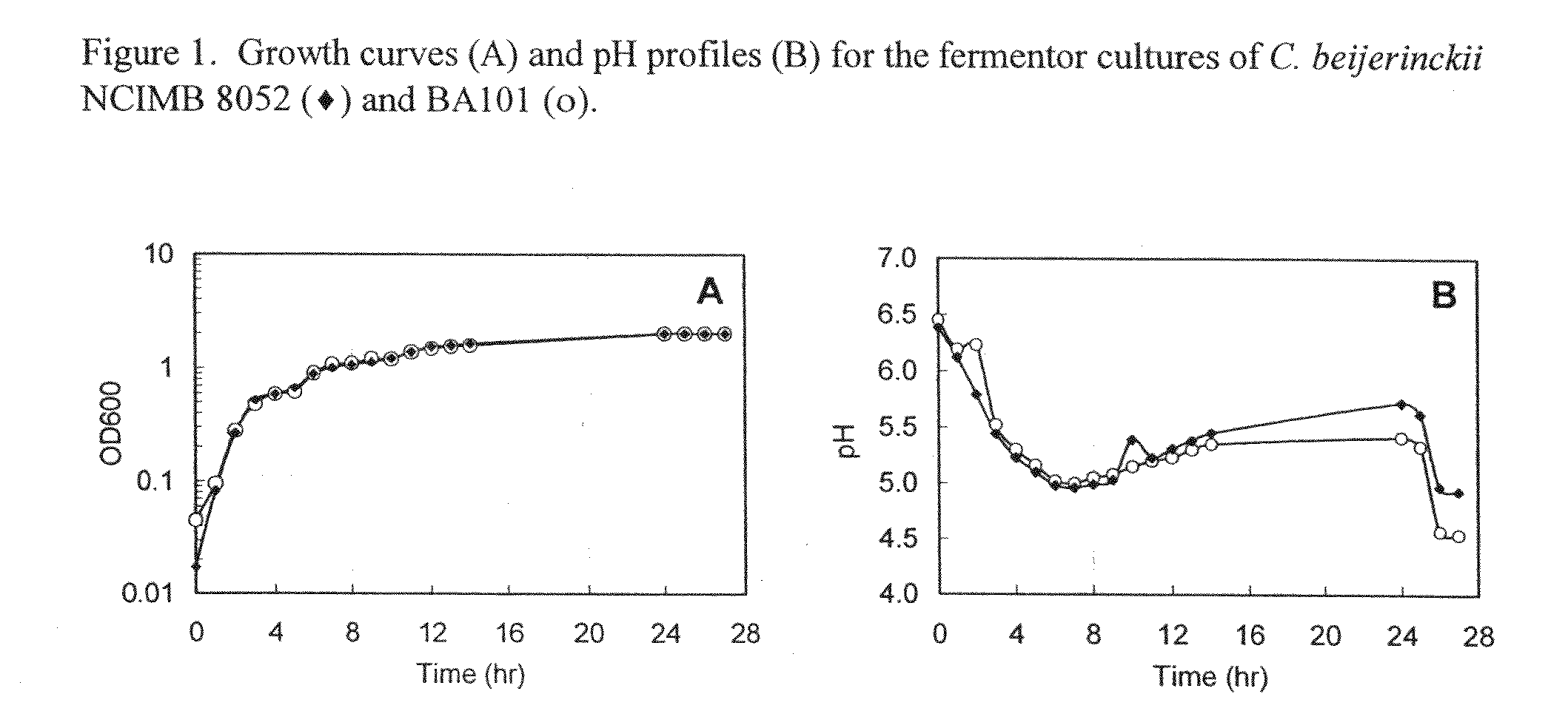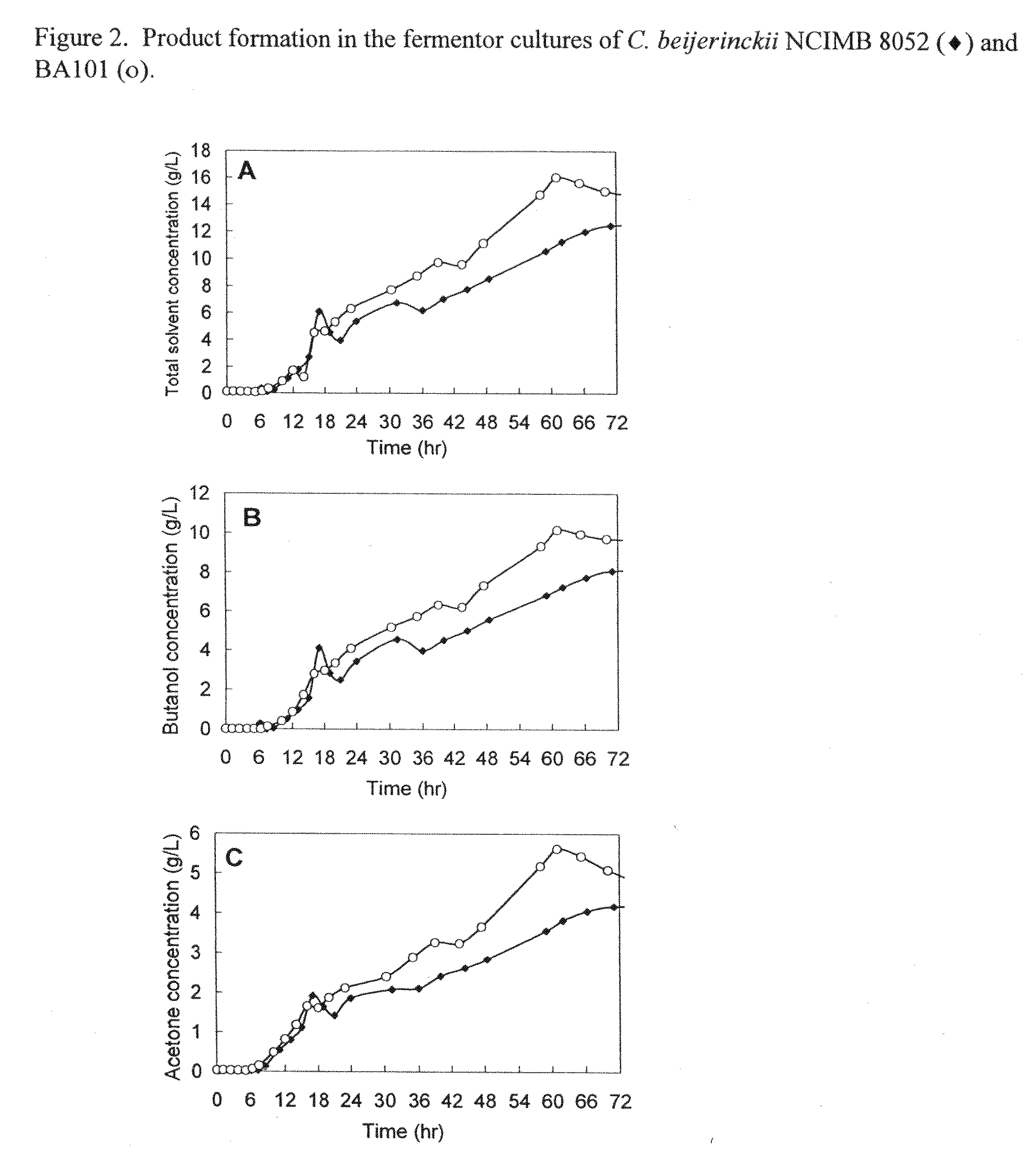Methods and compositions for producing solvents
a technology of solvents and compositions, applied in the field of solvent generation, can solve the problems of underexploited biofuels and the limitation of butanol fermentation, and achieve the effects of increasing or decreasing the expression of genes, increasing the efficiency of solvent production, and increasing the efficiency of butanol production
- Summary
- Abstract
- Description
- Claims
- Application Information
AI Technical Summary
Benefits of technology
Problems solved by technology
Method used
Image
Examples
example 1
Bacterial Strains and Fermentation Protocols
[0263]Bacterial strains and growth conditions. C. beijerinckii NCIMB 8052 is the wild-type strain. BA101 is the hyper butanol-producing mutant strain. Stocks of the wild-type and BA101 spores were stored in sterile nanopure H2O at 4° C.
[0264]Fermentation protocols. 1 ml C. beijerinckii spore suspensions were heat shocked at 80° C. for 10 min, and inoculated into 100 ml tryptone-glucose-yeast extract (TGY) media containing 3% tryptone, 2% glucose, 1% yeast extract and 0.1% L-cysteine-HCl. The TGY culture was grown at 35° C. for 12 hrs in an anaerobic chamber (Coy Laboratory Products) maintained under a gas mixture of 85% N2, 10% CO2 and 5% H2. The culture was diluted 106-107 fold into 0.45% liquefied TGY-agar and the mixture was allowed to solidify in plates in the anaerobic chamber. Plates were incubated at 35° C. for 2-3 days. Individual colonies developed on the plates were inoculated into 30 ml cooked meat medium (CMM, Oxoid #CM0081) pl...
example 2
Fermentation Sample Analysis
[0265]Aliquots of 1 ml fermentation culture grown in P2 media were collected at various time points for both C. beijerinckii NCIMB 8052 and BA101.
[0266]Cell growth was monitored by measuring the absorbance at 600 nm with a spectrophotometer (Beckman Coulter). Results are depicted in FIG. 1A. The growth curve for the two strains was very similar under these conditions.
[0267]Changes in pH were monitored by sampling the liquid culture using a pH meter. Results are depicted in FIG. 1B. The pH of the liquid culture was similar under these conditions, though the C. beijerinckii NCIMB 8052 liquid culture had a higher pH at the later timepoints.
[0268]Culture supernatants were analyzed for solvent and acid contents using gas chromatography (Agilent Technologies). Results are shown in FIG. 2A, FIG. 2B, and FIG. 2C. Total solvents were similar in the two strains until about 20 hours, after which point the level of solvents was consistently higher in the BA101 strain...
example 3
RNA Sampling and Isolation
[0269]Aliquots of 10 ml fermentation culture in P2 media were obtained at various time points for both C. beijerinckii NCIMB 8052 and BA101. Cells were pelleted by centrifuging at 4000 g for 10 min. Total RNA was extracted from the cell pellets using a RNeasy mini kit (Qiagen) according to the manufacturer's protocol. RNA quality was determined with nanochip on an Agilent 2100 Bioanalyzer (Agilent Technologies). RNA concentration was quantified by measuring A260 using a UV / vis spectrophotometer (Biotek Instruments). Purified samples were stored in aliquots at −80° C.
[0270]To make a reference for comparing gene expression in the time course samples, a RNA pool was prepared and used to generate an oppositely labeled probe in microarray hybridization. To do so, a group of 500 ml static flask cultures were grown in P2 media for C. beijerinckii NCIMB 8052. The cultures were harvested at different stages of cell growth over the course of fermentation and total RN...
PUM
| Property | Measurement | Unit |
|---|---|---|
| concentrations | aaaaa | aaaaa |
| concentrations | aaaaa | aaaaa |
| concentrations | aaaaa | aaaaa |
Abstract
Description
Claims
Application Information
 Login to View More
Login to View More - R&D
- Intellectual Property
- Life Sciences
- Materials
- Tech Scout
- Unparalleled Data Quality
- Higher Quality Content
- 60% Fewer Hallucinations
Browse by: Latest US Patents, China's latest patents, Technical Efficacy Thesaurus, Application Domain, Technology Topic, Popular Technical Reports.
© 2025 PatSnap. All rights reserved.Legal|Privacy policy|Modern Slavery Act Transparency Statement|Sitemap|About US| Contact US: help@patsnap.com



